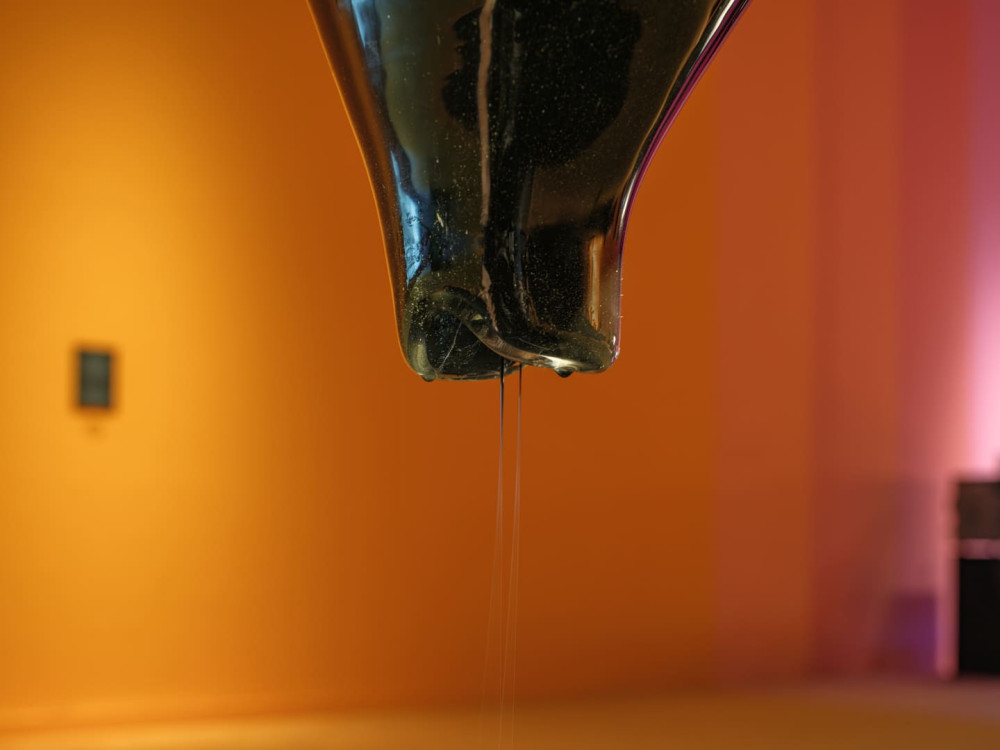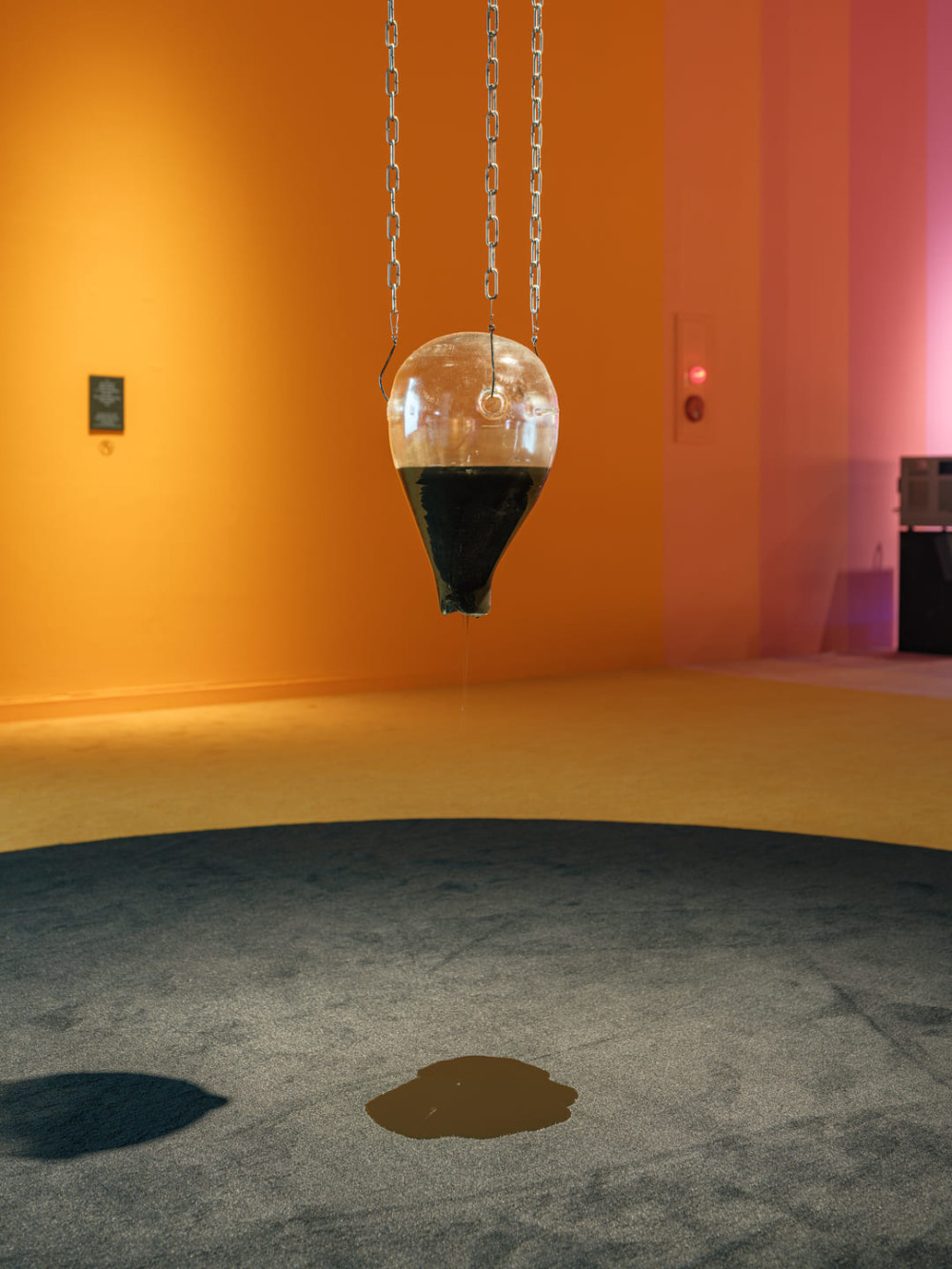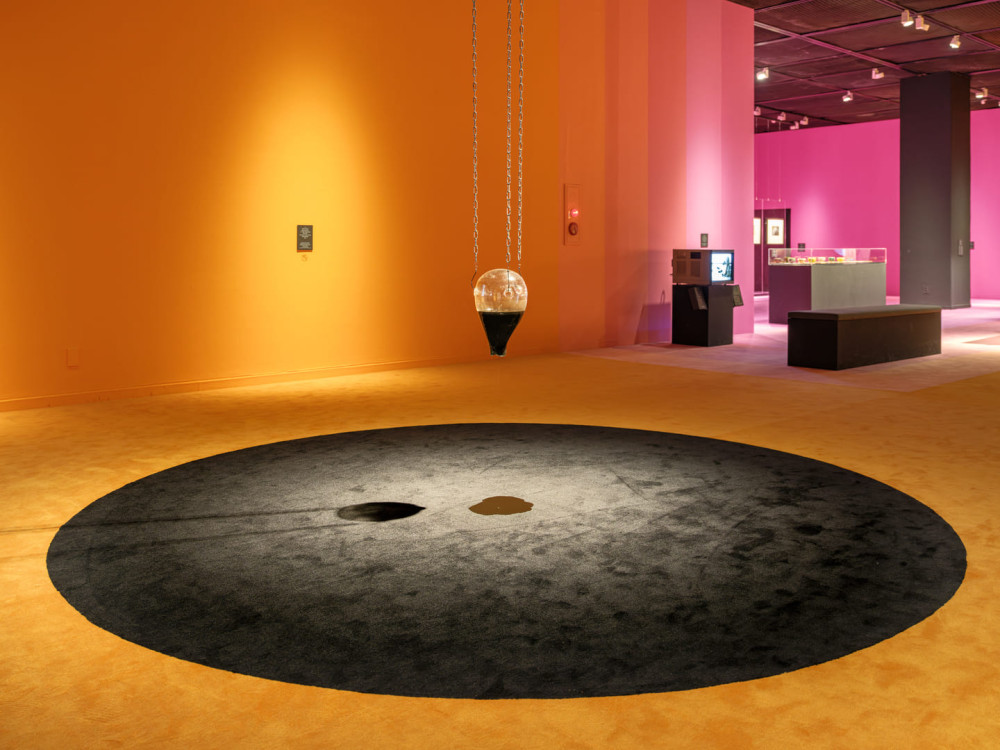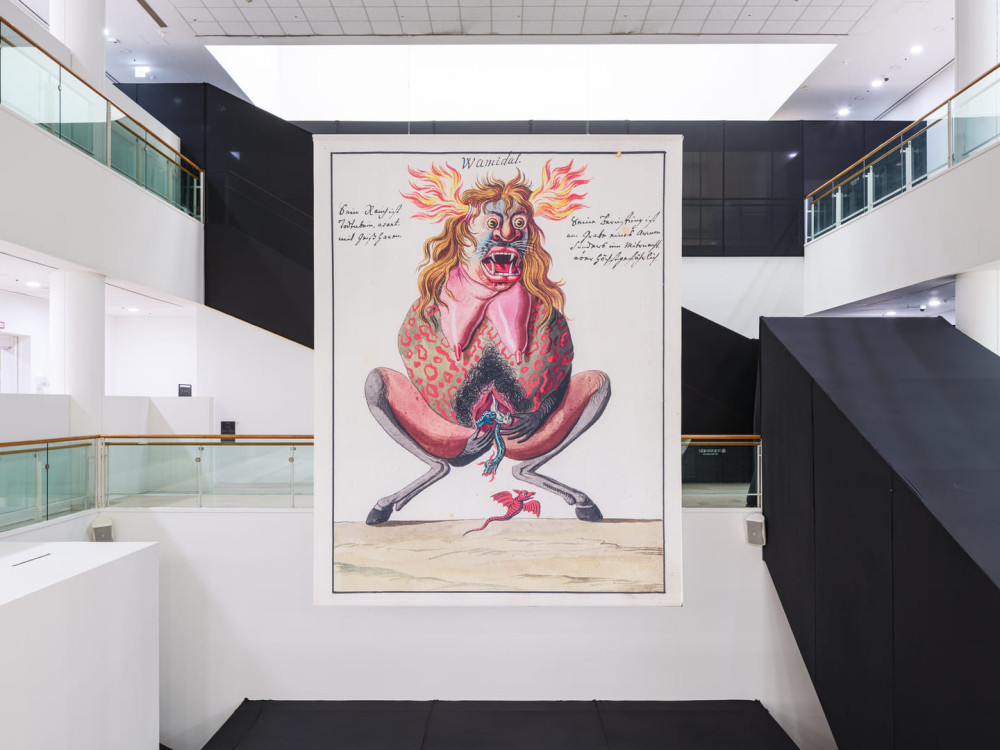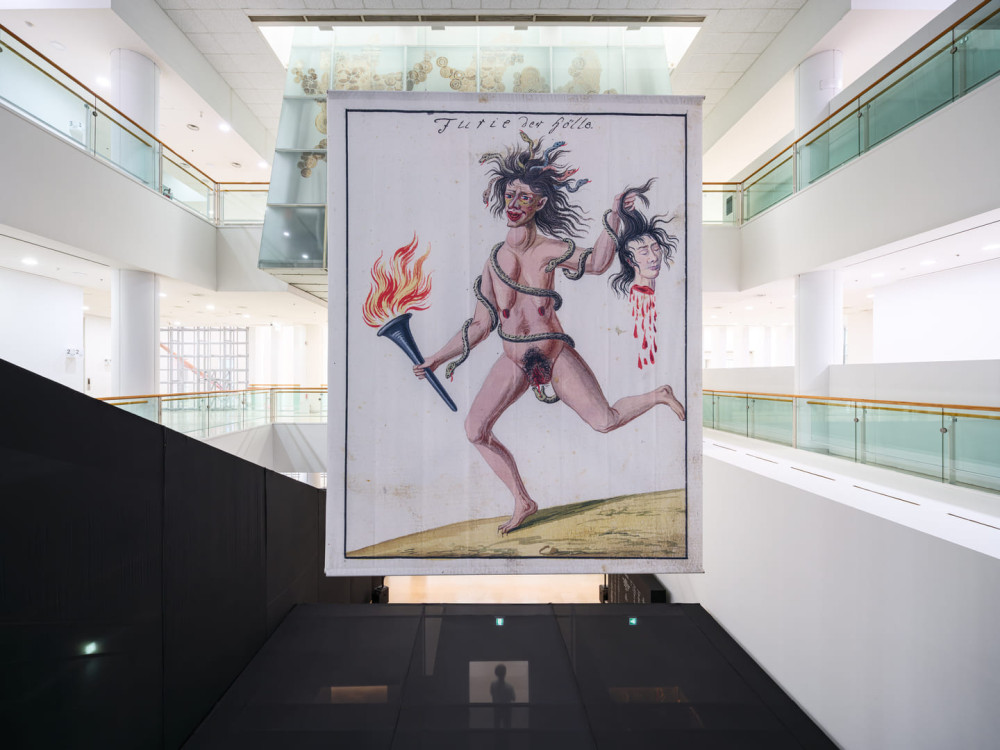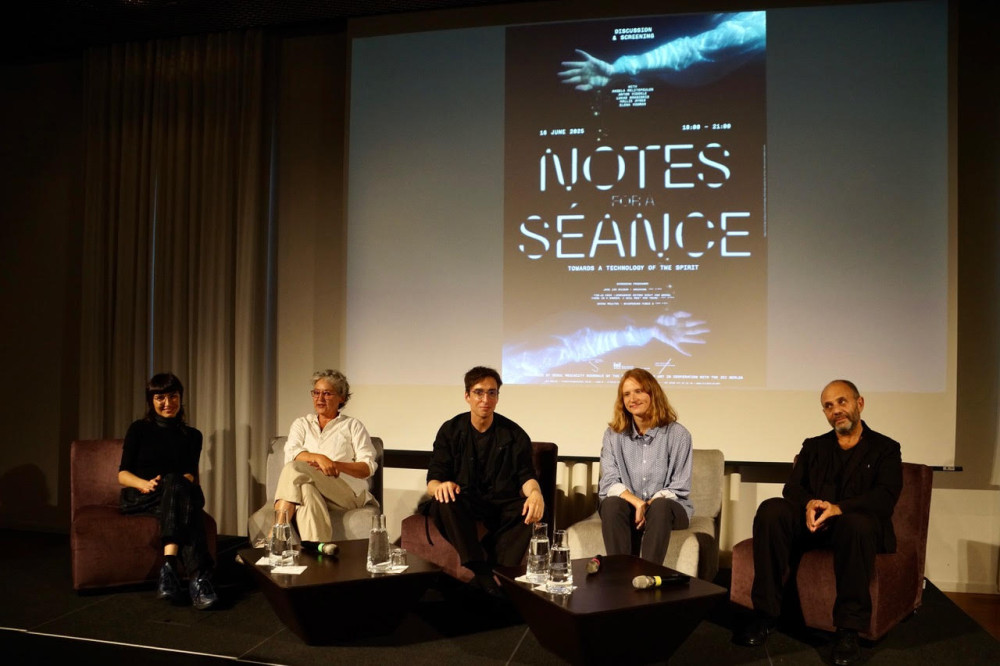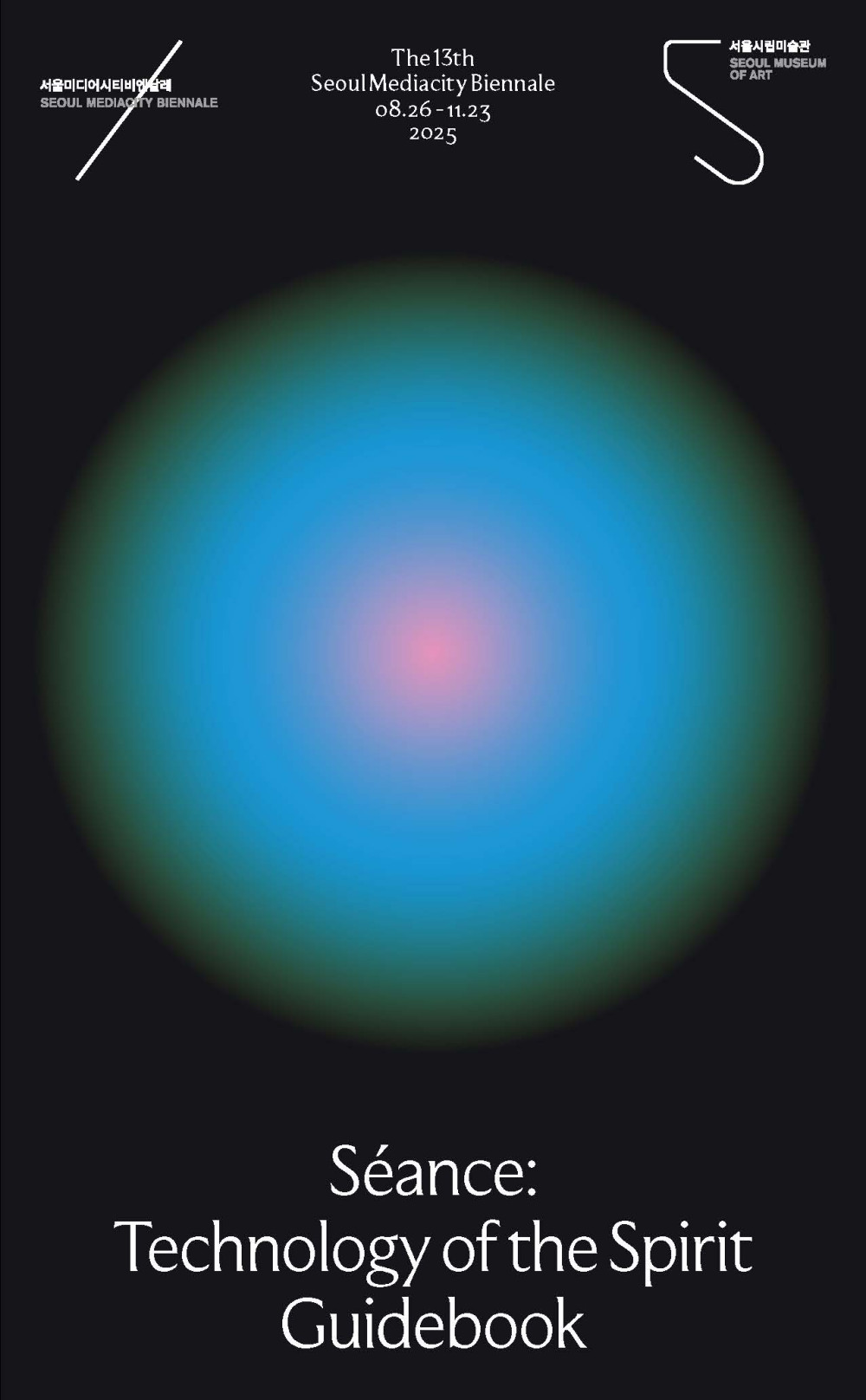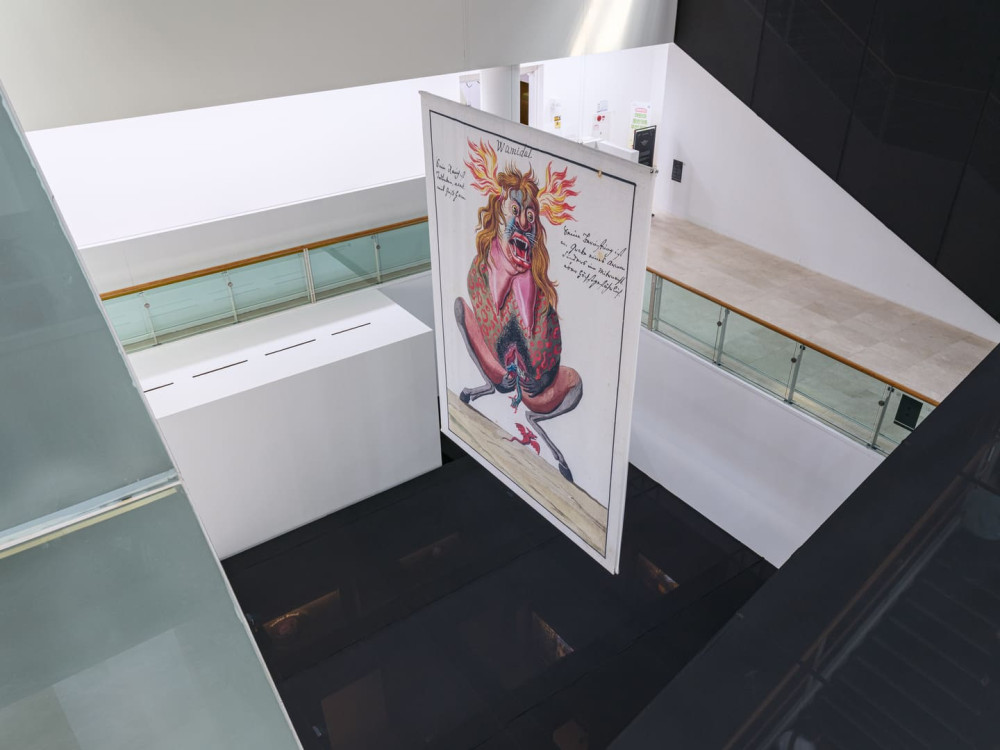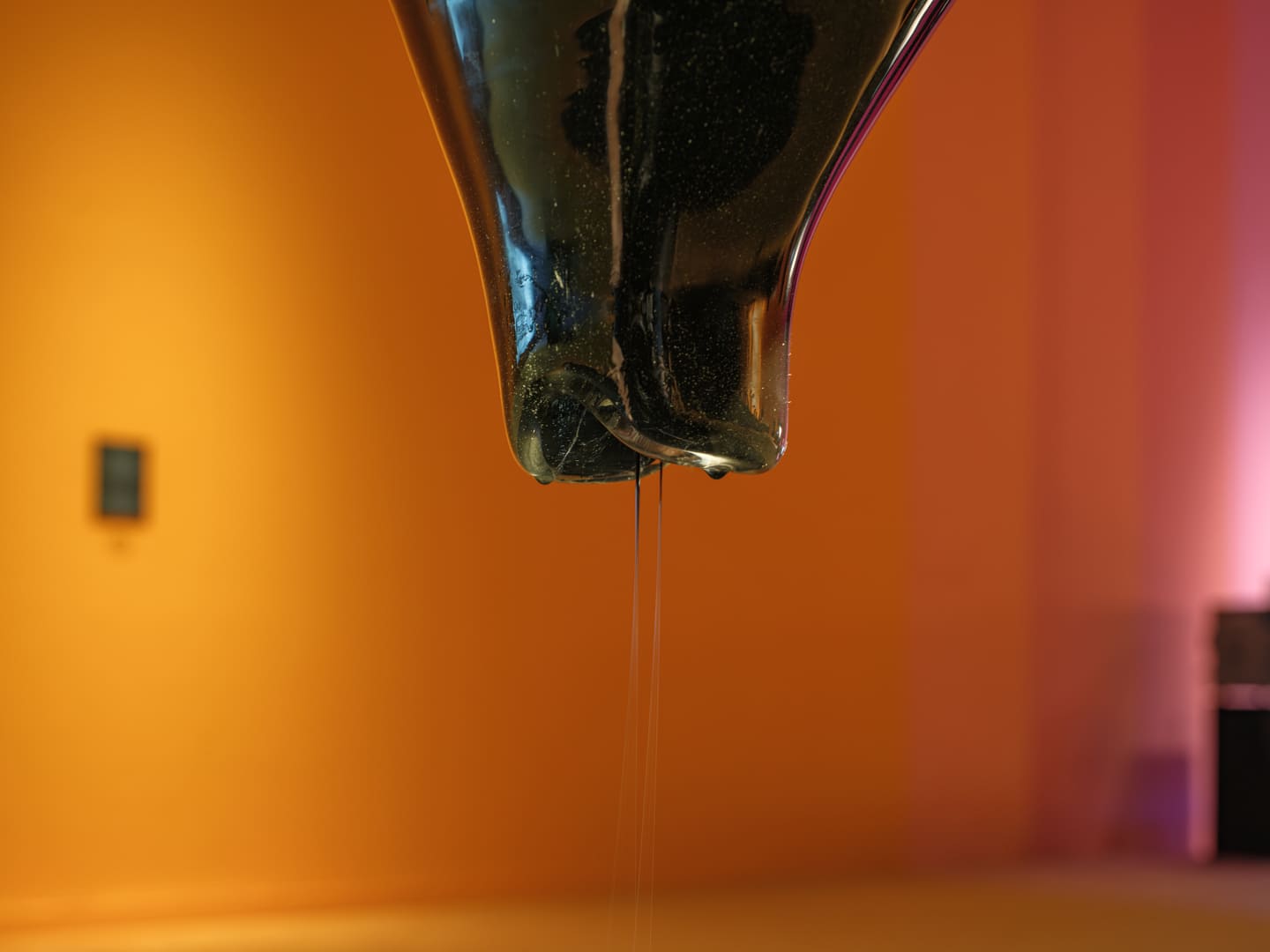
Johanna Hedva is a writer, artist, and musician who was raised by a family of witches. Hedva’s practice cooks magic, necromancy, and divination together with mystical states of fury and ecstasy, and political states of solidarity and disintegration. They are, in their own words, “devoted to deviant forms of knowledge and to doom as a liberatory condition.”
The two textile prints included in this exhibition reproduce watercolors from the Compendium of Demonology and Magic, an eighteenth-century book of magic spells and incantations whose title page gives an ominous warning to the uninitiated: Noli me tangere (Do not touch me). Written in German and Latin, and falsely purporting to date from 1075, it illustrates a number of demons and other supernatural beings that are said to aid a practitioner in necromancy and witchcraft.
Wrapped with snakes and carrying a decapitated head, the “Fury from hell” is the embodiment of divine female vengeance (often for crimes against family members). While the furies date back to classical Greek mythology, the demon Wamidal is more obscure. Her pose suggests a close relation to the Sheela na gigs that were commonly carved into the stonework of medieval European churches, and she is seen giving birth to devils.
Johanna Hedva, The Clock Is Always Wrong (Wamidal), 2022. textile prints. 502 × 390 cm
Johanna Hedva, The Clock Is Always Wrong (Die Furie der Hölle), 2022. textile prints. 502 × 390 cm
Johanna Hedva, The Clock Is Always Wrong (Other Mouth), 2023. mouthblown glass, three large hooks, chains, silicone oil mixed with pigment, carpet. dimensions variable
